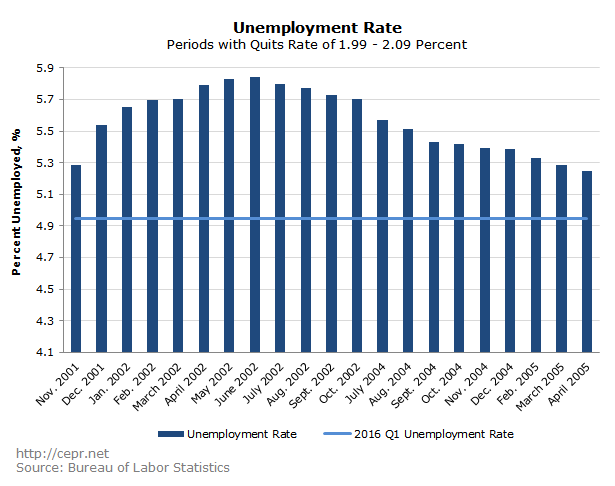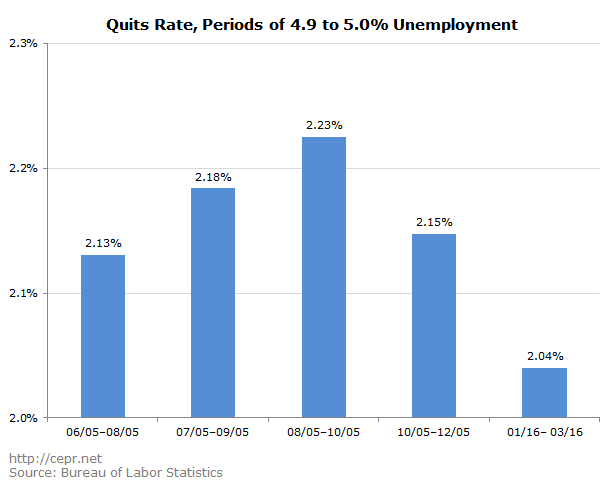June 06, 2016
The data in the Job Openings and Labor Turnover Survey (JOLTS) provide evidence of continuing weakness in the labor market in spite of the relatively low unemployment rate.
Through the first three months of 2016, the unemployment rate averaged 4.95 percent. While this is a reasonably low unemployment rate, by many other measures the labor market is far from recovering from the recession. One of these measures is the quits rate.
When workers feel that there are few job opportunities, they are less likely to quit their jobs, because they see few better opportunities. Through the first three months of the year, the quits rate has averaged just 2.04 percent, an unusually low rate.
Figure 1 shows the unemployment rate (the dark blue bars) for all three-month periods before the recession with a quits rate that was within 0.05 percentage points of the quit rate for the first three months of 2016. (The specific time period for the figure is 2001 through 2006. The JOLTS data only go back to December 2000.) The light blue line shows the unemployment rate from the first quarter of 2016. Today’s 2.04 percent quits rate clearly corresponds to an unemployment rate higher than 4.95 percent.

To take the opposite side of this story, Figure 2 shows the quit rates for other periods where the unemployment rate has been 4.95 percent. As can be seen, this level of unemployment is ordinarily associated with a considerably higher quit rate.







